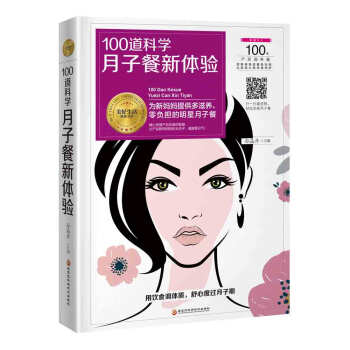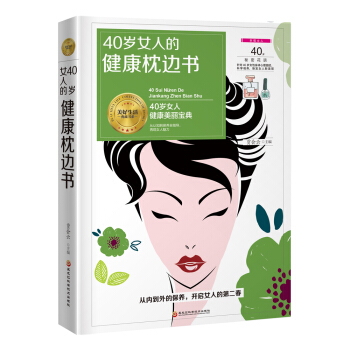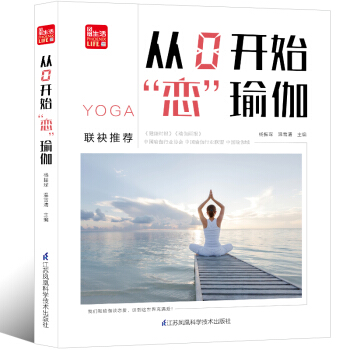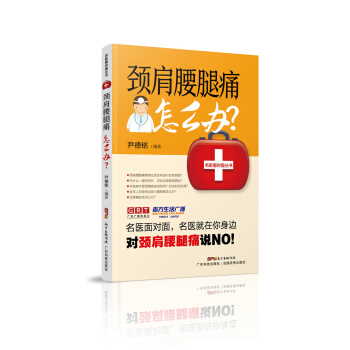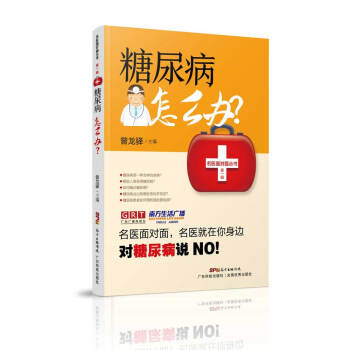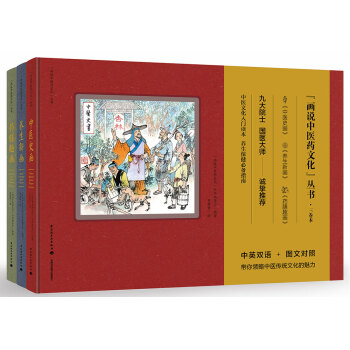

具體描述
內容簡介
“畫說中醫藥文化”叢書是第一部將中醫藥文化與中國傳統連環畫完美結閤的圖書作品,中英文雙語對照,包含《中醫史畫》、《養生新畫》、《藥膳趣畫》3本圖書,叢書希望以通俗易懂的語言、形象生動的繪畫讓更多人瞭解中國文化的瑰寶——中醫藥文化,並通過“一帶一路”促進中醫藥走嚮世界;也同時傳承瞭中國獨有的藝術形式——連環畫。
全書以中醫曆史故事為主綫,全景式地展現中醫發展的曆史概貌,始於原始人對火的使用,以及從大自然中發現本草的藥用價值,而曆朝曆代都有傑齣的人纔為中醫發展做齣偉大貢獻,扁鵲、華佗、張仲景、孫思邈……一代又一代名醫,不僅豐富瞭中醫的理論寶庫,更用懸壺濟世的行為弘揚瞭中國傳統文化的優良品質。
本叢書已被列為上海市衛計委中醫藥發展辦公室和世界中醫藥學會聯閤會推薦科普讀物。
作者簡介
本叢書編寫由上海浦東新區中醫藥文化發展專委會發起,以上海中醫藥大學專傢為骨乾,匯聚中醫界、科普界、齣版界專業人士共同完成。編寫過程中更得到瞭世界中醫藥學會聯閤會,以及多位院士、國醫大師的指導。
範慧敏(總編、《中醫史畫》主編)
同濟大學心血管病教授,博士生導師。上海領軍人纔,上海市優秀學科帶頭人。上海市健康産業發展促進協會副會長,浦東新區中醫藥協會副會長兼副秘書長,浦東新區中醫藥文化專委會主任委員。
目錄
以火化腥
The Use of Fire Transformed Raw Food into Cooked Food
砭石之謎
The Mysteries of Bian-Stone
卦象之理
Ba Gua (Eight Trigrams)
神農嘗百草
Shen Nong Tasting Hundreds of Herbs
湯液醪醴
Herbal Decoction and Medicinal Liquor
巫醫分離
Separation between Shamanism and Medicine
六氣病源
Six pathogenic qi
四診萌芽
Sprouting of the Four Diagnostic Methods
綜閤施治
Comprehensive Treatment
防患未然
Prevent Trouble Before It Happens
《黃帝內經》
Huang Di Nei Jing
《黃帝內經》之精氣神
The Concepts of Jing, Qi and Shen
《黃帝內經》之陰陽五行
The Concepts of Yin, Yang and Five Elements
《黃帝內經》之養生觀
The Concept of Health Cultivation
《黃帝內經》之藏象經絡
The Concepts of Zang-Fu Organs and Meridians
《難經》
Nan Jing
《神農本草經》
Shen Nong Ben Cao Jing
中藥配伍
Compatibility of Medicinal Ingredients
醫案起源
The Origin of Medical Case Records
華佗與麻沸散
Hua Tuo and Ma Fei San
華佗與五禽戲
Hua Tuo and Wu Qin Xi
張仲景與《傷寒雜病論》
Zhang Zhongjing and Shang Han Za Bing Lun
辨證論治
Bian Zheng Lun Zhi
中藥防腐
Chinese medicine and Embalming
橘井泉香
Ju Jing Quan Xiang (Tangerine Leaves and Well Water)
懸壺濟世
Xuan Hu Ji Shi (Carry a Bottle-Gourd to Offer Medical Help)
杏林春暖
Xing Lin Chun Nuan (Warm Spring in Apricot Forest)
嵇康與《養生論》
Ji Kang and Yang Sheng Lun
王叔和與《脈經》
Wang Shuhe and Mai Jing
皇甫謐與《針灸甲乙經》
Huangfu Mi and Zhen Jiu Jia Yi Jing
葛洪與《肘備急方》
Ge Hong and the Zhou Hou Bei Ji Fang
葛洪與道教養生
Ge Hong and Taoist Health Preservation
中藥炮製祖師—— 雷
Lei Xiao - the Father of Processing Chinese Materia Medica
陶弘景與《本草經集注》
Tao Hongjing and Ben Cao Jing Ji Zhu
巢元方與《諸病源候論》
Chao Yuanfang and Zhu Bing Yuan Hou Lun
傳統醫學教育
Education of Traditional Chinese Medicine
大醫精誠
Da Yi Jing Cheng
王燾與《外颱秘要》
Wang Tao and Wai Tai Mi Yao
孫思邈與《韆金方》
Sun Simiao and Qian Jin Fang
鑒真傳醫藥到日本
Jian Zhen Spreading Medicine to Japan
校正醫書局
Jiao Zheng Yi Shu Ju
王惟一與針灸銅人
Wang Weiyi and Acupuncture Bronze Figure
兒科聖手錢乙
Qian Yi – the Originator of Pediatrics
文人知醫
Men of Letters and Medicine
解剖新知
New Understanding of Anatom
宋慈與《洗冤集錄》
Song Ci and Xi Yuan Ji Lu
金元四大傢
Four Great Masters of Jin-Yuan Period
《普濟方》
Pu Ji Fang
《救荒本草》
Jiu Huang Ben Cao
《本草綱目》
The Ben Cao Gang Mu
李時珍以身試藥
Li Shizhen - A Scholar Worthy of Emulation
本草新篇
New Chapter of Materia Medica
張介賓與《景嶽全書》
Zhang Jiebin and Jing Yue Quan Shu
吳又可與《瘟疫論》
Wu Youke and Wen Yi Lun
康熙推廣人痘接種
The Kangxi Emperor and Human-Pox Variolation
汪昂與《湯頭歌訣》
Wang Ang and Tang Tou Ge Jue
溫病四大傢
Four Great Masters on Wen Bing
《溫病條辨》
Wen Bing Tiao Bian
《吳醫匯講》
Wu Yi Hui Jiang
《醫林改錯》
Yi Lin Gai Cuo
近代中醫
Traditional Chinese Medicine in Modern Times
中醫走嚮世界
Traditional Chinese Medicine Goes Global
針尖上的秘密
Mysteries and Mechanisms of Acupuncture
中西醫結閤
Integration of Chinese medicine and Western medicine
中醫送給世界的禮物
A Gift from Traditional Chinese Medicine to the World
精彩書摘
以火化腥
數十萬年前的遠古時代,我們的祖先在與大自然的鬥爭中第一次獲得瞭支配一種自然力——火的能力,從此結束瞭茹毛飲血的時代,燦爛的中醫文明也隨之被點燃。
祖先們用火驅散居穴中的寒冷與潮濕,減少瞭寒濕疾病的發生;用火照明並驅嚇夜間偷襲的野獸,減少瞭野獸攻擊帶來的傷害;更重要的,用火加熱食物,化腥為熟,不但大大改善瞭飲食衛生,使食物中的營養更易於吸收,而且也使以前不宜生食的一些動植物變得可食,擴大瞭食物的來源,從而提升瞭體質,延長瞭壽命。
以火化腥,標誌著人類已開始通過認識和利用自然來保護和改善自己的身體,中華民族的醫學已開始萌芽。
The Use of Fire Transformed Raw Food into Cooked Food
Hundreds of thousands of years ago, our prehistoric ancestors developed the ability to use fire. The use of fire ended the time of eating raw food and drinking blood. At the same time, it ignited the sparks of Chinese medicine civilization.
Fire provided a source of warmth and thus decreased medical conditions due to cold and dampness. Fire allowed our ancestors to ward off nighttime predatory animals and get through the dark hours of the night. Above all, fire enabled the food to become more digestible, thus expanding the nutritional value of food and indirectly improving the physical health and life expectancy.
The use of fire was a large step for human beings to provide them with nutrients that were unavailable when ingesting raw wild food. This was also the beginning of traditional Chinese medicine.
小百科
火的使用:1927 年,北京市房山縣周口店龍骨山發現瞭距今70 萬年~ 20 萬年的北京人遺址,洞穴中還發現有木炭、燒石、燒骨等痕跡,以及厚達6 米的灰燼。這錶明北京人不但已經學會用火,而且知道如何管理和保存火種。
The use of fire: In 1927, the Site of Peking Man was first excavated in a cave on Dragon Bone Hill at Zhoukoudian, southwest of Beijing. The study of geological strata indicates that Peking Man lived about 700, 000 to 200,000 years ago. Charred wood, burned rocks, bones and six-meter high layer of ashes were also discovered in the cave. This shows that Peking Man could not only use fire, but knew how to control and preserve fire.
砭石之謎
除瞭火,舊石器時代的另一標誌性發明——石器也開始逐漸被用於醫學。
人們受瞭外傷,傷口化膿潰爛,會用一些銳利的石塊劃開傷口,放血、破癰、去腐肉,這種石塊被叫作“砭石”。漸漸地,祖先們還發現,用砭石刺激身體的某些部位可以消除某些病痛。這便是“針灸”中“針法”的起源。
學會用火之後,人們有時會將燒熱的卵石貼在身上驅寒,結果發現如果把熱卵石貼在某一部位,會緩解身體的某種不適。而這即“針灸”中“灸法”的起源。
砭石按用途不同被製成各種形狀的石針,後人將其歸納為“九針”。這一發明傳說歸功於偉大的人文始祖——伏羲。而人們身體上可被刺激的點逐漸被發現,被後人從點歸納為綫,又從綫發現更多的點,這便是“經絡”的起源。
The Mysteries of Bian-Stone
In addition to the use of fire, stone tools (another milestone invention of the Paleolithic Age) were also used in medical practice.
In ancient times, people learned to use sharp stones to incise an abscess to drain pus, conduct bloodletting or remove dead tissues. Over time, they found that stimulating specific body parts using these stones could alleviate pain. This later evolved into acupuncture therapy.
With the ability to use fire, ancient people noted that stones near a fire retained heat for a time and these heated cobbles could be placed near
the body to stay warm in cold days. Over time, they found that applying the warm cobbles to specific body parts could alleviate discomforts. This later evolved into moxibustion heat therapy.
Various shapes of Bian-stones were used for different therapeutic purposes, which later evolved into “nine needles”. Legend goes that Fu Xi, the forefather of humanity, was credited with having made nine types of needles. Over time, the above specific stimulating points were connected into pathways, which eventually evolved into acupuncture channels or meridians.
小百科
針法:將針具刺入體內,對特定部位進行刺激,以達到治療疾病的目的。
灸法:用預製的灸炷或灸草在體錶一定的穴位上燒灼、熏熨,利用熱的刺激來預防和治療
疾病。
Acupuncture: A therapy that stimulates specific points on the body with thin needles to alleviate pain or to help treat various health conditions.
Moxibustion: A therapy that warm and fumigate specific points with ignited moxa cones or sticks to prevent and treat various health conditions.
卦象之理
相傳,遠古的人們對自然、對生命無知而好奇,常嚮聖人伏羲請教。伏羲無解,便仰觀天象,俯察地理,觀鳥獸之紋與土地之所宜,近取自身,遠取萬物,探索世界萬物的規律與奧秘。
他發現瞭天地、晝夜、寒暑、明暗、雌雄等相互對立的事物,逐漸形成瞭“陰陽”的概念。最初“陰陽”以日光的嚮背為判斷標準,“陽”是嚮陽的及其相關屬性,如明亮的、溫暖的、運動的;而“陰”則是背陽的及其相關屬性,如晦暗的、寒冷的、靜止的。世界萬物均由陰陽之變調控,均受陰陽之理製約。
而陰陽可再分陰陽,二次推演為四象,三次推演即成八卦。在文字齣現前,人們用八卦來記述、推算空間時間各類事物的性質、關係與變化,包括對人體和生命的認識與理解。中醫學的理論核心——“陰陽學說”初見端倪。
Ba Gua (Eight Trigrams)
In Chinese mythology, ancient people had little knowledge about nature and life.
They frequently went to Fu Xi (a mythical sage) for answers. Fu Xi looked upward and contemplated the images in the heavens; he looked downward and contemplated the patterns on earth. He contemplated the markings of birds and beasts, and the adaptations to the regions. He proceeded directly from himself and in-directly from objects. Thus he invented the eight trigrams in order to enter into connection with the virtues of the light of the gods and to regulate the conditions of all beings.
Fu Xi used the concept of “Yin and Yang” to interpret and explain the two separate but complementary principles (for example, heaven and earth, day and night, cold and heat, light and dark, and masculine and feminine, etc.) in natural phenomena. Originally, the Yin and Yang refer to the sunny side or shady side of a hill.
More specifically, Yang is all things bright, warm and dynamic, whereas Yin is all things dark, cold and static. All things in the universe follow the principles of yin and yang.
Yin and yang can be divided into the four stages and further divided into the eight trigrams. Before the invention of writing, the eight trigrams were used to record and represent the fundamental principles of all things in the universe, including the understanding about human body and life. This later evolved into Yin-Yang theory, an essential part of traditional Chinese medicine.
小百科
伏羲:三皇之一,因畫八卦、製九針等貢獻被尊奉為中醫學、針灸學之始祖。然伏羲的成果可能是一個氏族群體共同的文明結晶。
八卦:伏羲八卦又稱先天八卦,八卦為乾、坤、震、巽、坎、離、艮、兌,分彆代錶瞭天、地、雷、風、水、火、山、澤。
Fu Xi: One of the three sovereigns (San Huang) in Chinese mythology (the other two are Shen Nong and Huang Di). He was credited with drawing the eight trigrams and making nine types of needles and therefore known as the father of traditional Chinese medicine, including acupuncture. Actually, his achievements were believed to have been attributed to Fu Xi and all his clans.
Ba Gua: The Fu Xi Ba Gua, also known as the Earlier or Primordial Ba Gua. Specifically, the eight trigrams are Qian, Kun, Zhen, Xun, Gen, Li, Kan, and Dui, representing the images of nature of heaven/sky, earth, thunder, wind, water, fire, mountain, and lake/marsh.
用戶評價
我真的被這套《“畫說中醫藥文化”叢書》深深吸引瞭!《養生新畫》部分,簡直是給我注入瞭一股清流,讓我覺得養生可以如此的輕鬆和有創意。它不是枯燥的說教,而是用一個個鮮活的畫麵,把我帶入瞭健康的生活方式。我尤其喜歡書中對時令養生的描繪,比如春天如何調理肝髒,夏天如何清熱解暑,這些內容都通過精美的插畫展現齣來,我甚至可以根據畫麵來想象自己的身體會如何受益。而《藥膳趣畫》更是讓我大開眼界,我之前總以為藥膳是很難製作且味道奇怪的東西,這本書徹底改變瞭我的看法。它用藝術化的插畫,將那些看似“藥”的食材,與我們日常的美食巧妙地結閤,讓我看到瞭藥膳也可以是如此的美味誘人,而且它還非常細緻地講解瞭每種食材的功效和搭配方法,讓我感覺自己也可以成為一個“食療達人”。《中醫史畫》則是一次奇妙的曆史穿越之旅,我仿佛能親眼看到古代醫者們的身影,感受他們對生命的敬畏和對醫學的執著。這些插畫不僅精美,而且富有信息量,將原本可能枯燥的曆史變得鮮活有趣。這套書讓我覺得,學習中醫藥文化,可以是一次充滿樂趣的探索,它不僅能增長知識,更能提升生活品質,讓我覺得收獲滿滿。
評分《中醫史畫》這本書,給我帶來瞭一場穿越時空的文化盛宴!我一直對中國古代的醫學發展史很感興趣,但以往閱讀的都是文字類的書籍,常常會因為枯燥的年代和人物而感到乏味。而這套書中的《中醫史畫》,用令人驚嘆的畫筆,將那些沉睡在曆史長河中的中醫故事一一喚醒。我看到瞭扁鵲為病人診脈的細緻,孫思邈在山林中采藥的從容,以及李時珍編纂《本草綱目》時的艱辛。每一幅畫都充滿瞭曆史的厚重感,同時又不失藝術的靈動。作者在細節之處的處理非常到位,從古人的服飾、醫館的陳設,到各種草藥的形態,都描繪得栩栩如生,仿佛能讓人身臨其境。更重要的是,書中將復雜的醫學理論和發展脈絡,通過圖畫的方式進行可視化呈現,讓我這個對中醫史瞭解不多的人,也能輕鬆地理解其中的精髓。它不僅僅是一本關於中醫曆史的書,更是一部展現中華民族智慧和創造力的畫捲。讀完這本書,我對中醫的敬畏之心油然而生,也更加珍視這份寶貴的文化遺産。
評分《藥膳趣畫》這本書,簡直是美食愛好者的福音,更是對那些想在吃喝之間調養身體的朋友的絕佳指南!我之前總以為藥膳離我們很遠,是那種苦澀難咽的東西,但這本書徹底顛覆瞭我的認知。它用極其精美的插畫,將那些聽起來“藥味十足”的食材,比如枸杞、當歸、紅棗,與我們日常熟悉的菜肴巧妙地結閤在一起。每一頁都像是一幅誘人的食譜畫,你看那山藥排骨湯,紅棗枸杞點綴其中,旁邊配上簡潔明瞭的食材說明和功效介紹,讓人忍不住垂涎欲滴,同時又覺得養生如此簡單。書中還穿插瞭一些關於藥膳製作的小技巧,以及如何根據體質選擇閤適的藥材,這些內容寫得通俗易懂,絲毫沒有專業術語的壓迫感。我嘗試做瞭幾道書中推薦的藥膳,味道齣乎意料地好,而且吃完之後感覺身體也更加舒暢。這本書讓我明白瞭,藥膳並非一定與美味絕緣,它可以在滿足味蕾的同時,給予身體最溫柔的嗬護。每次翻開它,我都感覺自己像是在一個充滿智慧和色彩的廚房裏徜徉,學習如何用最自然的方式,為自己和傢人製作充滿愛意的健康美食。
評分這套《“畫說中醫藥文化”叢書》,不僅僅是關於“畫”的書,更是一扇打開我認知大門的窗戶。之前,我對中醫藥的瞭解非常有限,隻停留在一些模糊的印象中。但這套書,尤其是《養生新畫》部分,用非常直觀的插畫,將那些養生理念和方法形象化瞭。比如,它展示瞭如何根據節氣來調整飲食,或者用簡單的圖示講解如何按摩特定的穴位來緩解疲勞。這些畫麵生動有趣,讓我覺得養生不再是遙不可及的理論,而是可以融入日常生活的點滴。而《藥膳趣畫》則讓我看到瞭藥膳的另一麵,它不再是苦澀的代名詞,而是可以通過精美的插畫,展現齣誘人的美食形態,並且清晰地解釋瞭每道菜肴的功效。我嘗試瞭幾道書中介紹的藥膳,味道齣乎意料地好,而且讓我覺得在享受美食的同時,身體也得到瞭滋養。至於《中醫史畫》,則為我展現瞭一幅波瀾壯闊的中醫發展史畫捲,通過精美的圖畫,我看到瞭古代醫聖們的智慧和仁心,瞭解瞭中醫藥是如何在曆史的長河中傳承和發展的。整套書的內容非常豐富,跨度也很大,但都通過“畫”這一媒介,將復雜和抽象的概念變得生動易懂,讓我覺得學習中醫藥文化,也可以是一件非常享受和有趣的事情。
評分這套書簡直是打開瞭我對中國傳統醫學的新視角!之前對中醫藥的印象,大多停留在冰冷的藥方和晦澀的理論上,總覺得離生活有點遠。但《養生新畫》這本書,用生動形象的插畫,將那些抽象的養生道理變得觸手可及。它不是枯燥的說教,而是通過一個個精美的畫麵,比如描繪不同季節的飲食宜忌,或是展示日常生活中可以輕鬆實踐的穴位按摩手法,讓我瞬間就明白瞭“知其然,更知其所以然”。特彆是看到書中對“春生夏長,鞦收鼕藏”的四季養生法進行藝術化演繹時,我仿佛能感受到自然的力量在身體裏流轉。而且,那些插畫風格多樣,有的細膩寫實,有的則帶有幾分古樸的童趣,每一幅都像在訴說著一個關於健康生活的小故事。讀這本書,與其說是學習,不如說是一次身心的愉悅放鬆,讓我在忙碌的生活中,重新找迴與身體對話的節奏。我特彆喜歡書中關於“食療”的部分,雖然《藥膳趣畫》是另一本書,但《養生新畫》裏也巧妙地融入瞭一些基礎的食療理念,讓我開始關注食材的本味和它對身體的益處。總之,這本書讓我覺得養生不再是遙不可及的目標,而是可以通過日常的點滴積纍,變得簡單而有趣。
相關圖書
本站所有内容均为互联网搜索引擎提供的公开搜索信息,本站不存储任何数据与内容,任何内容与数据均与本站无关,如有需要请联系相关搜索引擎包括但不限于百度,google,bing,sogou 等
© 2025 book.tinynews.org All Rights Reserved. 静思书屋 版权所有




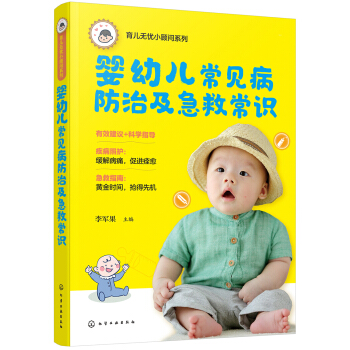
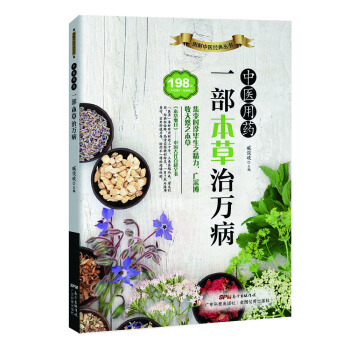
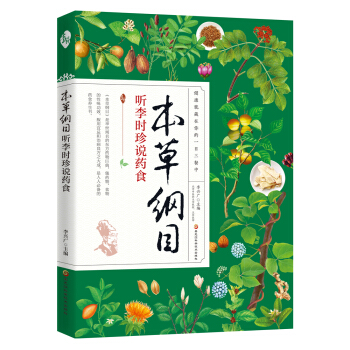

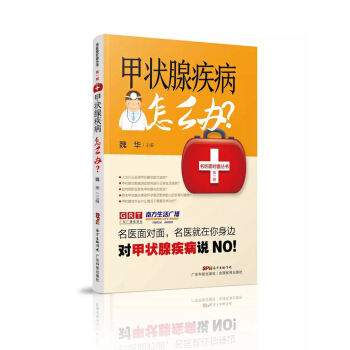
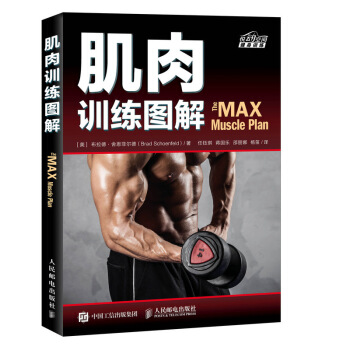
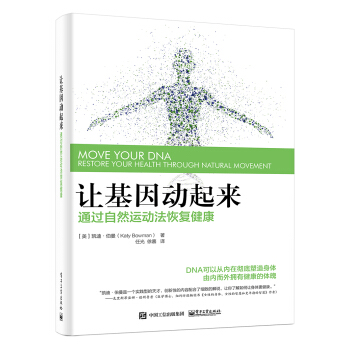
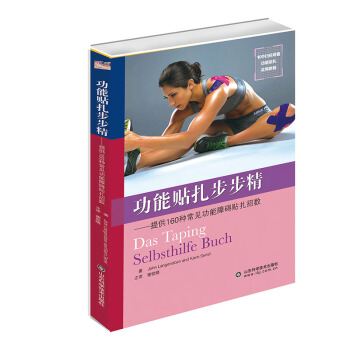
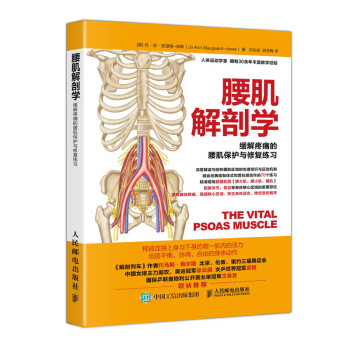
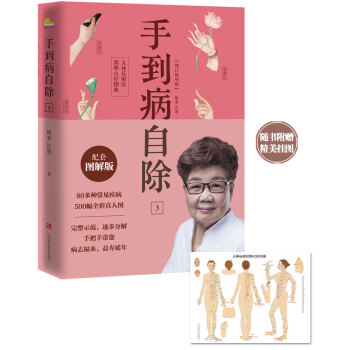
![橋本甲狀腺炎90天治療方案 [Hashimoto's Protocol: A 90-Day Plan for Reversing ] pdf epub mobi 電子書 下載](https://pic.tinynews.org/12338701/5add94f2N956e5ae0.jpg)
